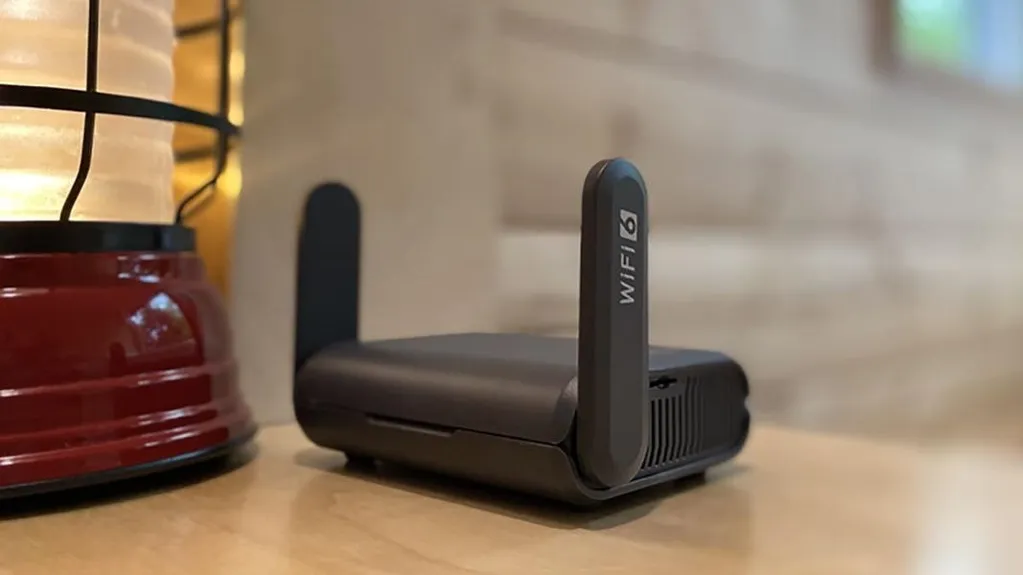In June, I reported on the launch of the Slate 7, one of the most advanced wireless travel routers from GL.iNet. This compact and pocket-sized wireless router uses the latest Wi-Fi 7 technology and features a touchscreen as well as many other advanced functions.
However, if all you need is an affordable wireless router that you can take with you on your travels to help you keep your data and devices safe online, then the Slate AX is a lower-priced option but still comes with plenty of advanced features but without the premium attached to Wi-Fi 7. And let's remember, not many client devices currently support Wi-Fi 7, although that is starting to change.
The Slate AX -- which also goes under the snappy title of GL-AXT1800 -- is a high-security travel router that uses Wi-Fi 6 technology with four independent Wi-Fi signal amplifiers that boost connection stability. The Slate AX runs the latest OpenWrt operating system and can connect multiple devices with reduced signal interference.
Despite its compact size, the Slate AX has enough power to support heavy Wi-Fi usage and is sufficient for a family or small office. The router's compact design makes it easy to deploy and it provides the kind of convenience and security that power users on the move will appreciate.
The Slate AX automatically encrypts all devices connected to its wireless network when using a VPN service. It can be used to broadcast Wi-Fi when staying at hotels where there's only an Ethernet or LAN connection, plus it can be used to mask data transfers from internet service providers when piggybacking on a public Wi-Fi hotspot in a café or hotel.
The Wi-Fi 6 connectivity that the Slate AX offers is dual-band and it combines both bands to create an aggregated Wi-Fi speed of 1800Mbps, made up of 600Mbps for 2.4GHz and 1200Mbps for 5GHz.
All of GL.iNet's routers use the powerful and open source OpenWrt operating system. Slate AX uses on the latest OpenWrt Kernel version 4.4.70 and it comes with the user-friendly Imagebuilder application to enable easy customization of firmware packages.
The Slate AX has two adjustable external antennas to extend the router's connection range. The antennas also help to improve the stability of the network. The Slate AX also comes with Wi-Fi 6's Base Service Station Coloring. This feature measures the carious Wi-Fi channel thresholds and automatically selects the channel with lowest usage. BSS Coloring helps improve the stability of the connection by minimizing the risk of the router picking up any signal interference.
Mass Device Connectivity is another feature of the Slate AX thanks to multi-user, multiple-input, multiple-output technology (MU-MIMO). This feature processes multiple data streams from devices that connected simultaneously to the Wi-Fi. Instead of queuing network traffic into a single data stream, MU-MIMO reduces the queuing delay when there's excessive traffic on the network.
This compact router also supports OFDMA technology which enables multiple devices to receive data from a single transmission. The result is considerably improved transmission efficiency when multiple devices are connected to the router.
The Slate AX is pre-installed with OpenVPN and WireGuard and supports more than 30 VPN services. There's support for VPN remote access to client devices using GoodCloud and all network traffic is automatically encrypted. The network uses the latest version of Internet Protocol IPv6, and supports Cloudflare DNS over TLS security protocol, providing a more secure network.
Network Attached Storage file sharing is also supported by the Slate AX and there's a user-friendly smartphone app for managing the router, providing the flexibility of high-speed local file transfer between connected devices or any microSD cards or storage devices attached to the router's USB port or memory card slot.
The Slate AX is approved to use Dynamic Frequency Selection in U.S., Europe and Japan. DFS enables the router's 5GHz network to take advantage of additional wireless frequencies that normally reserved for military, satellite and weather radar applications. The sue of additional channels can help lower network congestion.
